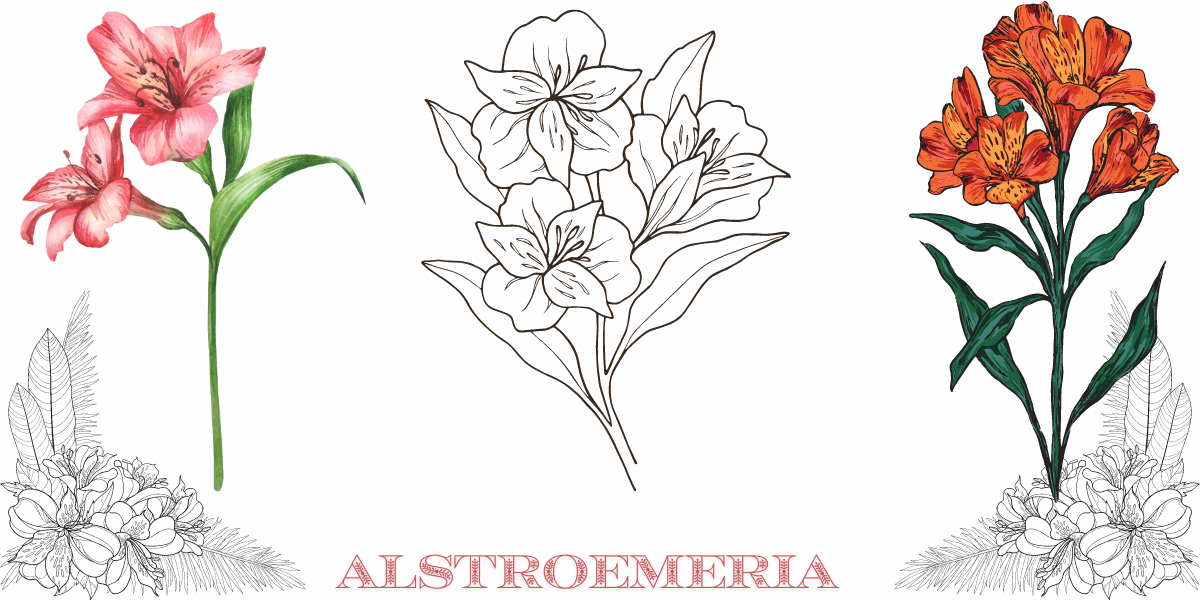Alstroemeria, also known as the Peruvian Lily or Lily of the Incas, is a vibrant and beautiful flower native to South America. Known for its stunning blooms and long-lasting vase life, Alstroemeria has become a favorite among gardeners and florists alike. This article explores the history, characteristics, cultivation, and uses of Alstroemeria, highlighting its significance in horticulture and floral design.
Historical Background
Origins and Discovery
Alstroemeria was first discovered in the late 18th century by Swedish botanist Clas Alströmer, after whom the flower is named. Native to the cool, mountainous regions of Chile, Brazil, and Peru, Alstroemeria has been cultivated for centuries due to its striking appearance and resilience.
Cultural Significance
In its native regions, Alstroemeria holds cultural significance and is often used in traditional ceremonies and celebrations. The flower symbolizes friendship, devotion, and prosperity, making it a popular choice for gifts and decorations.
Botanical Characteristics
Flower Structure and Appearance
Alstroemeria flowers are characterized by their unique, trumpet-shaped blooms that come in a variety of colors, including white, pink, yellow, orange, red, and purple. The petals often feature speckles or streaks, adding to their visual appeal. Each stem produces multiple blooms, creating a lush and vibrant display.
Growth Habit
Alstroemeria is a perennial plant that grows from rhizomes. It typically reaches a height of 1 to 3 feet, depending on the variety. The plant has lance-shaped leaves that grow in a distinctive, twisting pattern, adding an interesting texture to gardens and floral arrangements.
Varieties and Hybrids
There are over 120 species of Alstroemeria, with countless hybrids and cultivars developed for their unique colors and patterns. Some popular varieties include ‘Inca Ice,’ ‘Mauve Majesty,’ and ‘Indian Summer.’ These hybrids are bred for their exceptional beauty, hardiness, and extended blooming periods.
Cultivation and Care
Planting Alstroemeria
Site Selection: Alstroemeria thrives in well-drained soil with plenty of organic matter. It prefers a location that receives full to partial sunlight, though it can tolerate some shade in hotter climates.
Planting Depth: Plant the rhizomes about 6 inches deep and 12 inches apart to allow for proper growth and airflow.
Watering and Fertilization
Watering: Keep the soil consistently moist but not waterlogged. Alstroemeria benefits from regular watering, especially during dry spells. Mulching around the plants can help retain moisture and regulate soil temperature.
Fertilization: Use a balanced, slow-release fertilizer during the growing season to promote healthy growth and abundant blooms. Avoid over-fertilizing, as this can lead to excessive foliage at the expense of flowers.
Pruning and Maintenance
Pruning: Remove spent blooms and dead leaves to encourage continuous flowering and prevent disease. In late fall, cut back the foliage to ground level to prepare the plant for winter dormancy.
Winter Care: In colder regions, mulch heavily around the base of the plant to protect the rhizomes from frost. In areas with severe winters, consider lifting the rhizomes and storing them in a cool, dry place until spring.
Uses of Alstroemeria
In Gardens
Alstroemeria is a versatile plant that can be used in various garden settings. Its vibrant colors and lush foliage make it an excellent choice for borders, flower beds, and containers. The plant’s long blooming period ensures continuous color throughout the growing season.
In Floral Arrangements
Florists highly value Alstroemeria for its beauty and longevity. The flowers are often used in bouquets, centerpieces, and floral arrangements for weddings, parties, and other special occasions. Their sturdy stems and long vase life make them a favorite among floral designers.
Symbolic and Gift Uses
Given its symbolism of friendship and devotion, Alstroemeria is a popular choice for gifts. Whether celebrating a birthday, anniversary, or expressing gratitude, a bouquet of Alstroemeria conveys heartfelt emotions and well-wishes.
Benefits of Growing Alstroemeria
Low Maintenance
Alstroemeria is relatively low maintenance, making it an ideal choice for both novice and experienced gardeners. Once established, the plant requires minimal care and can thrive in various conditions.
Attracting Pollinators
The bright, nectar-rich blooms of Alstroemeria attract bees, butterflies, and other pollinators, promoting a healthy and vibrant garden ecosystem.
Resilience and Adaptability
Alstroemeria is known for its resilience and adaptability. It can tolerate a range of soil types and weather conditions, making it a versatile addition to gardens worldwide.
Conclusion
Alstroemeria, with its stunning blooms and rich history, is a cherished plant in both gardens and floral designs. Its low maintenance requirements, long-lasting flowers, and symbolic significance make it a favorite among gardeners and florists alike. Whether grown for its beauty or given as a gift, Alstroemeria continues to enchant and inspire.



